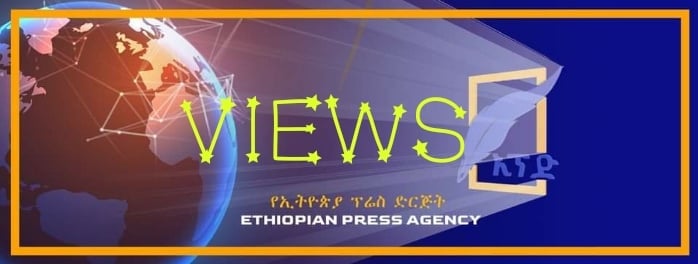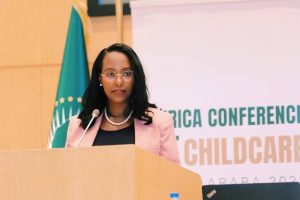
BY GETACHEW MINAS
Social conflict is a fierce and intense clash between governments and organized non-state actors within countries. The definition of social conflict encompasses many different forms of skirmishes. There is, however, a distinction between in which insurgents seek territorial secession or autonomy and conflicts in which insurgents aim for control of the central government.
Analysts also suggest that social conflicts over government control may involve insurgents originating from “within” the country as in coups, or challengers from outside the political establishment. They also differentiate between ethnic conflicts, in which the insurgents and individuals in control of the government have separate ethnic identities. The insurgents aim for social chaos as the TPLF tried to do in Ethiopia.
A given social conflict combines several elements, including ethnic and ideological based insurgencies. The TPLF, as a “liberation front,” aimed for secession of Tigray from Ethiopia. In the interim period, however, it controlled the entire country, until it was expunged and removed from power. It faced challenges to its authority from the time it usurped power in the country. It encouraged ethnic conflicts and cleansing. In so doing it established its supremacy on the various social groups in the country. These conflicts often persist for a long time. The TPLF junta dreamt of maintaining civil disturbances which are less likely to be settled by formal agreements. History reveals that the outbreak of “new” civil conflicts becomes more turbulent and violent after a long period of stability. But, Ethiopia has never been stable, facing cycles of civil conflicts imposed upon it by superpowers for centuries.
The causes of the “decline” in social conflicts remain subject to studies. However, the ongoing conflicts are manageable as they are generated and controlled by superpowers. These conflicts ended at short notice or extended until their objectives are achieved. The major objective is to control conflicting factions on both sides of a battle front.
The winner is promoted by the western media as a democratic front that deserves assistance for the implementation of its program. If the conflict does not come to an end, then sales of arms to the warring factions will continue as a source of revenue for the defense industry. This revenue continues to rise with the number of deaths. Furthermore, these social conflicts can have a substantial indirect negative impact on human welfare beyond the direct loss of life, unless settled in time.
The effects of conflicts are very tragic as they destroy lives and properties of people who have no inkling or clue of the fight. Studies have indicated that people experiencing social conflict suffer a pronounced deterioration in their standard of living. The economy of their country also faces a decline in gross domestic product and it will never recover its growth trend. In many countries social conflicts disrupt trade and investment that cause social unrest and unemployment. Former combatants and displaced individuals face the worst economic and social crises. The negative consequences of social conflicts are not limited to the countries that experience them, but extend to neighboring countries. These countries also suffer negative economic and social impacts and become more prone to violence as refugees flock in.
Armed combatants tend to cause more problems by exploiting tense situations. They seize the opportunity for grabbing and snatching the property of people, after killing them. For the TPLF junta, eliminating people removes the barrier to snatching the wealth of the rural community they temporarily controlled. The TPLF functionaries also burnt schools, houses, stores, hospitals, clinics, pharmacies and government offices.
The wealth of rural people constitutes mainly cattle, goats, sheep, and chicken, grain, grain storage, huts and community warehouses, all of which have been stolen or destroyed by the junta. The cattle were killed with bullets just to deny the farmers their means of farming for the next season. The junta consumed the goats, sheep and chicken of the poor farmers, just to satisfy themselves at the misery of others. Finally, they killed both the farmers and their cattle and burnt their huts, clinics, stores and schools before they left for the next village.
It is true that most social conflicts take place within relatively poorer societies. Studies on violence within poor societies identified economic deprivation and grievances as key motives. As Ted Gurr revealed, inequality is a major cause of rebellion by the people.
If they are dissatisfied with their current economic status relative to their aspirations, they rebel. The studies on nationalist conflicts emphasized how both relatively poorer groups are likely to rebel against the government if they believe that it is the major cause of their tragic life. Social conflicts in Ethiopia are often interpreted within a framework focusing on economic grievances arising from either unequal treatment or high income inequality. The TPLF junta, for example, had created high income inequality that favored its ethnic supporters.
Economists argue that low overall income makes it easier to mobilize insurgencies. Potential recruits for insurgency have less to lose in foregone income from normal economic activities. Others have claimed that social conflict is primarily a problem of weakened governments and that weakness is largely determined by political insurgency. Studies linked mobilization for social conflict to incentives given to individuals. Opportunities for insurgencies are greater when participants can prosper from conflict through looting or by gaining control of valuable natural resources. Studies supported the link between the existence of valuable natural resources and a higher risk of social conflict. Social groups and the government should, therefore, cooperate in identifying this risk and reduce or eliminate it.
Many conflicts emerge as people sought to win their basic and democratic rights. Friendly powers help to mobilize movements by showing how superpowers could be defeated through sustained violent campaigns. Many movements conducted struggles of national liberation and won their independence from colonial powers. Ethiopia defended its centuries old independence from these evil powers. It is engaged in local proxy war that is initiated, supported and financed by the superpowers. The war mongering neocolonialists change their strategies whenever their proxy, the TPLF, loses its fight against the people and government of Ethiopia. They use international forums to gather support to the war that they are financing. This effort is futile as it is interference in the internal affairs of Ethiopia.
Studies indicate that there is little evidence that ethnic diversity itself makes a country more prone to civil conflict. In fact, diversity makes Ethiopians closer to one another through intermarriage, religious affinity, and cultural linkages that made them the most colorful people. More relevant is the extent to which all ethnic groups are included in the politics of their country. Ethnic diversity in Ethiopia is an inclusive institution that guarantees the people access to power. In the recent election, broader political rights have been enjoyed by all Ethiopians, which has been beyond the expectation of the superpowers. These powers had projected inter-ethnic violence that would impede election at all levels within the country. As usual, they proved wrong in their assumption.
Ethiopians have several opportunities, apart from cultural ones, to avoid superimposed violence. One of these opportunities is to ensure citizens rooms for political, economic and social activities. The government guarantees people the exercise of basic human rights, which in turn may motivate them to peaceful coexistence. It also prevents autocratic or exclusionary acts at all levels. If left uncontrolled these acts often turn violent and sometimes lead to sustained conflicts. Greater political rights and freedom are clearly important elements of the “rhetoric” of many insurgent movements, such as the TPLF that had failed to establish democratic institutions while it was in power in Ethiopia for 27 years. It is now conducting ethnic conflict in some parts of the country dreaming to regain its lost power with the support of the superpower.
Autocratic regimes that combine tyrannical and repressive features are the most prone to violent conflicts. Because they prevent political freedom and opportunities for protest, they become more repressive. This creates insurgent social groups that are determined to extract concessions from the repressive government. They use focal groups for organizing protests that lead to regime change. Signals of weakened government authority can also increase the chances of success. Economic crises and natural disasters can increase the risk of social conflict. This is consistent with the crises and emergencies that had been created by the TPLF. The massive corruption of the junta members had generated widespread disillusionment among the Ethiopian people. This helped in creating and strengthening an insurgency.
The dystopian future of the Ethiopian society, in which there will be great suffering and injustice, has now come to an end with the flight of the TPLF from the center of power. Factors outside the country, like the TPLF sympathizers, could not play any role in the outbreak and evolution of social conflicts as they intended to do so. In social conflicts in the developing countries, the participants are not always confined to the countries in which most of the fighting takes place. Ethnic groups often span global boundaries, and transnational kinfolks and relatives frequently participate in or provide support for insurgencies. However, the international borders generate different constraints for insurgents. Borders are difficult to cross for armed conflict.
The fact that borders formally delineate State sovereignty makes it difficult for governments to combat insurgents based in neighboring countries. Studies indicate that the presence of conflict in a neighboring state can help to facilitate violent mobilization through the direct import of arms and combatants. These social conflicts may become closely linked to wars between neighboring countries. Poor relations between these countries may motivate governments to support insurgencies in neighboring countries.
These unrests may in turn promote military conflicts between countries as a result of border violations or alleged support for insurgents. Countries provoking and supporting insurgencies in their neighbors use the age old traditional strategy of diverting attention from their local political, economic and social crises. The Ethiopian people and government are now heroically repulsing and blunting this strategy of social conflict.
Editor’s Note: The views entertained in this article do not necessarily reflect the stance of The Ethiopian Herald
The Ethiopian Herald September 3/2021



